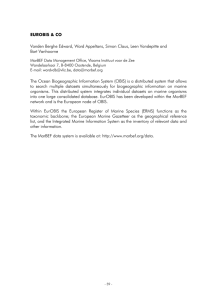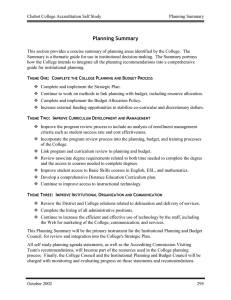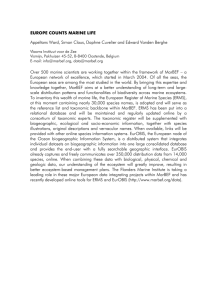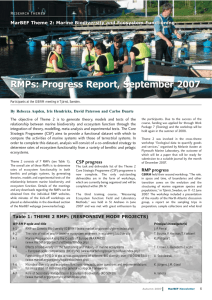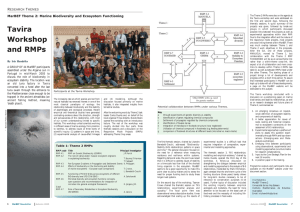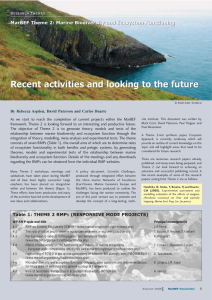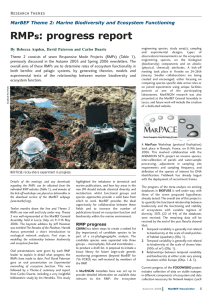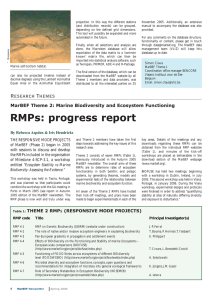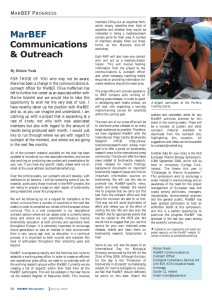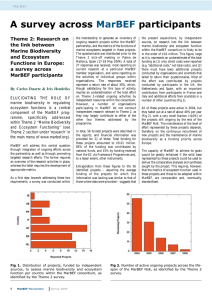Document 11953021
advertisement
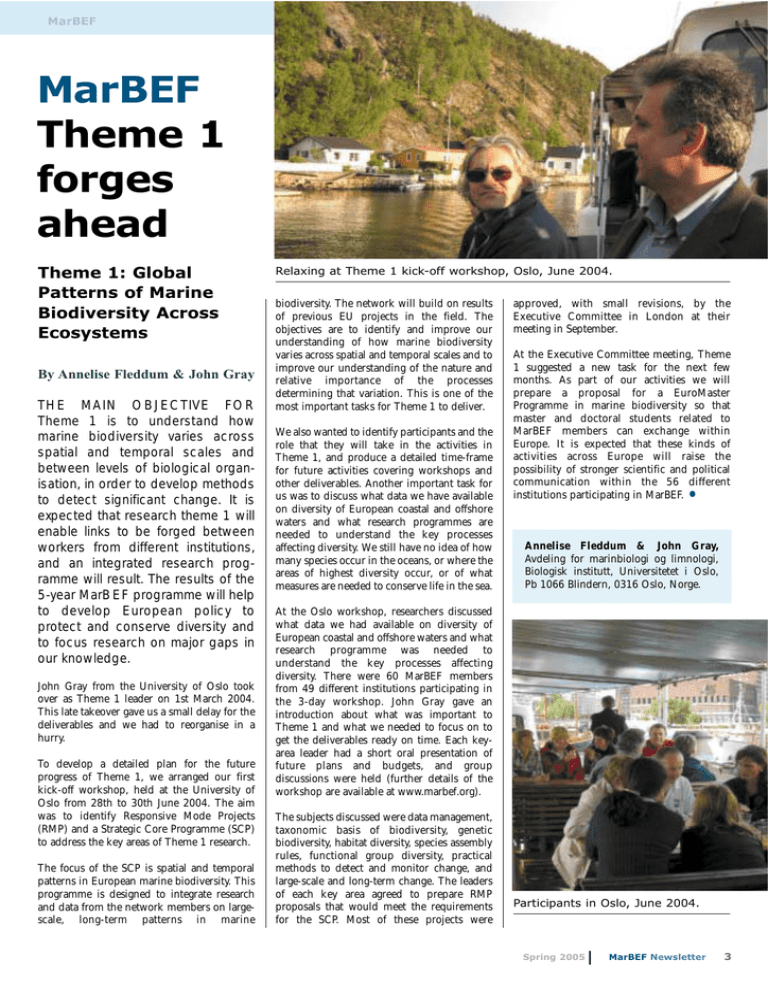
MarBEF MarBEF Theme 1 forges ahead Theme 1: Global Patterns of Marine Biodiversity Across Ecosystems By Annelise Fleddum & John Gray THE MAIN OBJECTIVE FOR Theme 1 is to understand how marine biodiversity varies across spatial and temporal scales and between levels of biological organisation, in order to develop methods to detect significant change. It is expected that research theme 1 will enable links to be forged between workers from different institutions, and an integrated research programme will result. The results of the 5-year MarBEF programme will help to develop European policy to protect and conserve diversity and to focus research on major gaps in our knowledge. John Gray from the University of Oslo took over as Theme 1 leader on 1st March 2004. This late takeover gave us a small delay for the deliverables and we had to reorganise in a hurry. To develop a detailed plan for the future progress of Theme 1, we arranged our first kick-off workshop, held at the University of Oslo from 28th to 30th June 2004. The aim was to identify Responsive Mode Projects (RMP) and a Strategic Core Programme (SCP) to address the key areas of Theme 1 research. The focus of the SCP is spatial and temporal patterns in European marine biodiversity. This programme is designed to integrate research and data from the network members on largescale, long-term patterns in marine Relaxing at Theme 1 kick-off workshop, Oslo, June 2004. biodiversity. The network will build on results of previous EU projects in the field. The objectives are to identify and improve our understanding of how marine biodiversity varies across spatial and temporal scales and to improve our understanding of the nature and relative importance of the processes determining that variation. This is one of the most important tasks for Theme 1 to deliver. We also wanted to identify participants and the role that they will take in the activities in Theme 1, and produce a detailed time-frame for future activities covering workshops and other deliverables. Another important task for us was to discuss what data we have available on diversity of European coastal and offshore waters and what research programmes are needed to understand the key processes affecting diversity. We still have no idea of how many species occur in the oceans, or where the areas of highest diversity occur, or of what measures are needed to conserve life in the sea. approved, with small revisions, by the Executive Committee in London at their meeting in September. At the Executive Committee meeting, Theme 1 suggested a new task for the next few months. As part of our activities we will prepare a proposal for a EuroMaster Programme in marine biodiversity so that master and doctoral students related to MarBEF members can exchange within Europe. It is expected that these kinds of activities across Europe will raise the possibility of stronger scientific and political communication within the 56 different institutions participating in MarBEF. • Annelise Fleddum & John Gray, Avdeling for marinbiologi og limnologi, Biologisk institutt, Universitetet i Oslo, Pb 1066 Blindern, 0316 Oslo, Norge. At the Oslo workshop, researchers discussed what data we had available on diversity of European coastal and offshore waters and what research programme was needed to understand the key processes affecting diversity. There were 60 MarBEF members from 49 different institutions participating in the 3-day workshop. John Gray gave an introduction about what was important to Theme 1 and what we needed to focus on to get the deliverables ready on time. Each keyarea leader had a short oral presentation of future plans and budgets, and group discussions were held (further details of the workshop are available at www.marbef.org). The subjects discussed were data management, taxonomic basis of biodiversity, genetic biodiversity, habitat diversity, species assembly rules, functional group diversity, practical methods to detect and monitor change, and large-scale and long-term change. The leaders of each key area agreed to prepare RMP proposals that would meet the requirements for the SCP. Most of these projects were Participants in Oslo, June 2004. Spring 2005 MarBEF Newsletter 3
